Growth
In our "Growth" series, we take you on a journey; from the first seed to the delivery of the colorful gerbera to your store. In this blog, we begin with the first step of this beautiful journey: breeding. The gerbera is a flower that can no longer be left out of flower stores. With its many varieties and color variations, the gerbera is a timeless flower. But what does the gerbera's journey look like?
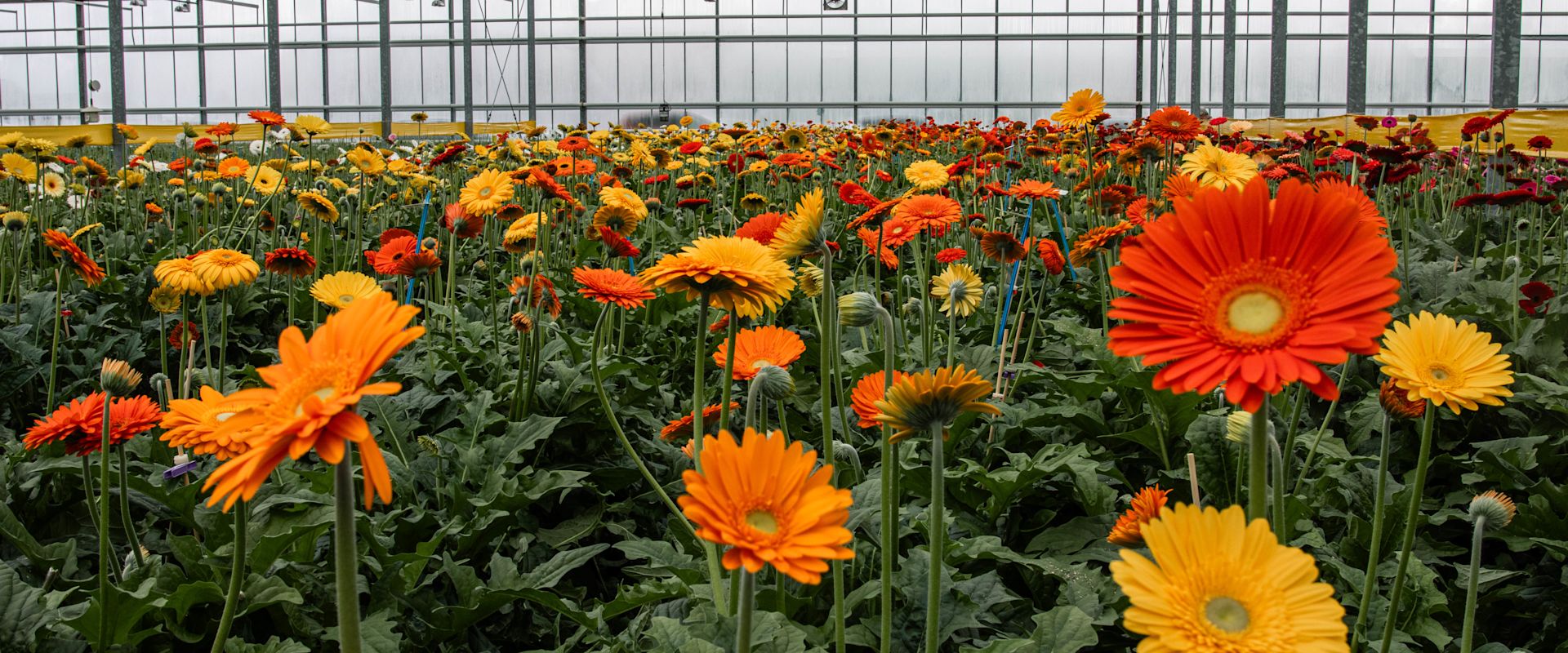
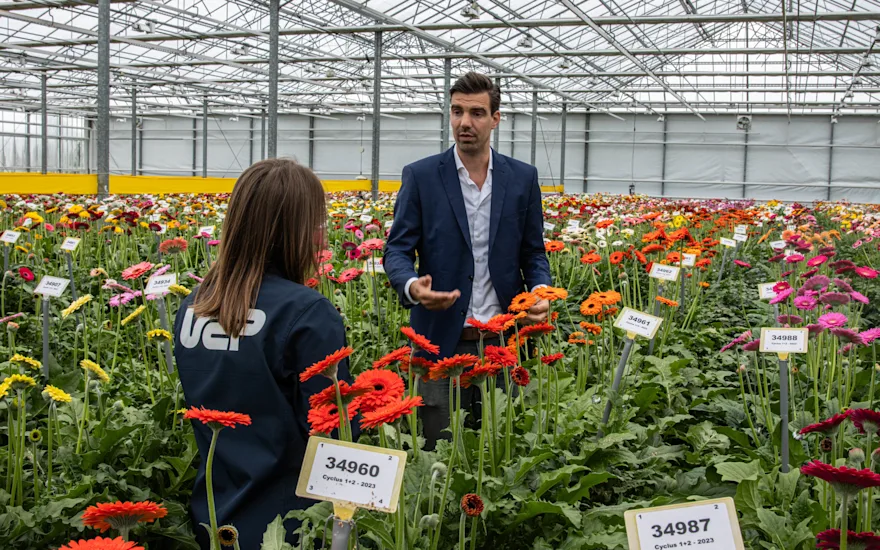
Complex process
HilverdaFlorist specialises in the cultivation of a wide range of cut flowers, pot plants and garden plants. Among other things, the company breeds gerberas for Summit Gerbera, one of Van der Plas' Flourishing Partners. Anyone who steps into HilverdaFlorist's greenhouses immediately realizes how large-scale the breeding process is As far as the eye can see there are flowers in various stages of development. Colored sticks and labels make it clear which flowers belong together. Robin van der Meer, sales manager and product manager of cut gerberas at HilverdaFlorist, explains that breeding is a complex cultivation technique. "The breeding process consists of several steps and often takes several years. We place high demands on the quality of the new varieties we create and want to be sure that the plant meets these requirements."
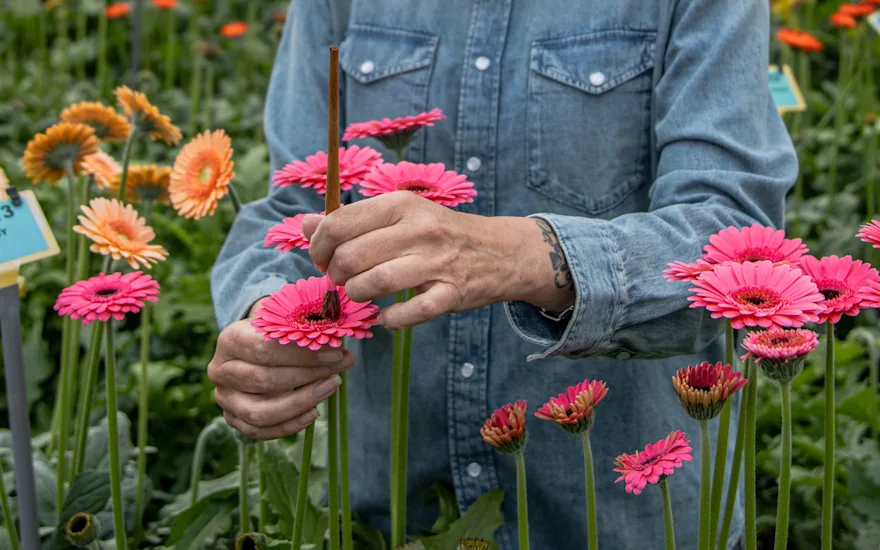
Database and tassels
Those who think refinement is done on good sense are incorrect. A special database clearly lists the genetic characteristics of each gerbera variety. "This 'gene pool' forms the basis for breeding" Robin explains. "Once it is clear what characteristics the new species must have, we look in this database to see which existing species have similar characteristics. Then we choose two varieties, each of which has a trait that we want to see reflected in the new variety. We pollinate each flower manually with a brush. After fertilization, seeds with traits from both flowers grow in the heart of the pollinated flower."
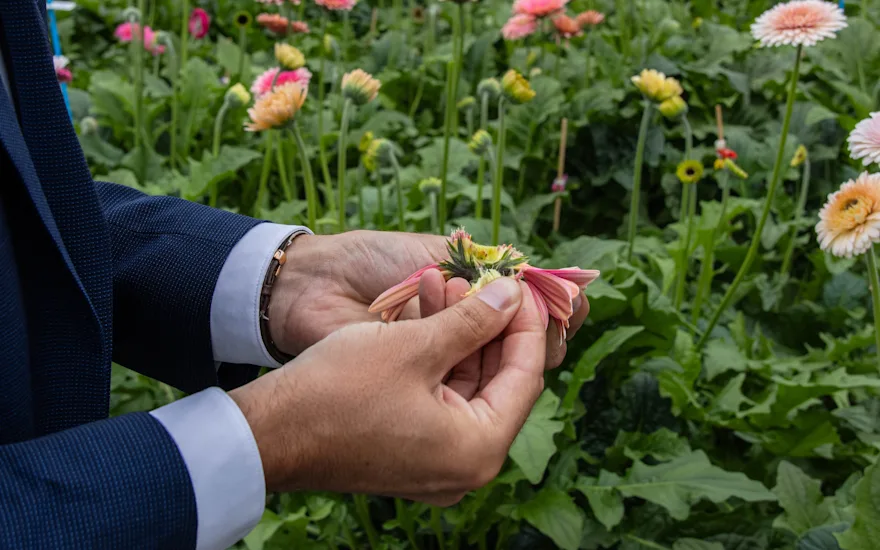
Tissue cultures
"Choosing flowers to cross and pollination are only the first two steps of the breeding process," Robin says. " The 'seedlings' that we raise from the seeds of the fertilized flower, we assess for desired characteristics. If there are gerberas among them that we think are good enough, the next step is tissue culture. We then take small pieces off the bottom of the stem, which we grow up to mature plants with the same genetics as the mother plant."
"Once the tissue cultures have grown into mature plants, they move on to the testing phase. We then see how well the flower performs seasonally. In the process, we also work with growers who grow new varieties in their greenhouse on a trial basis. If both we and the grower are satisfied with a new variety, we add it to the assortment."
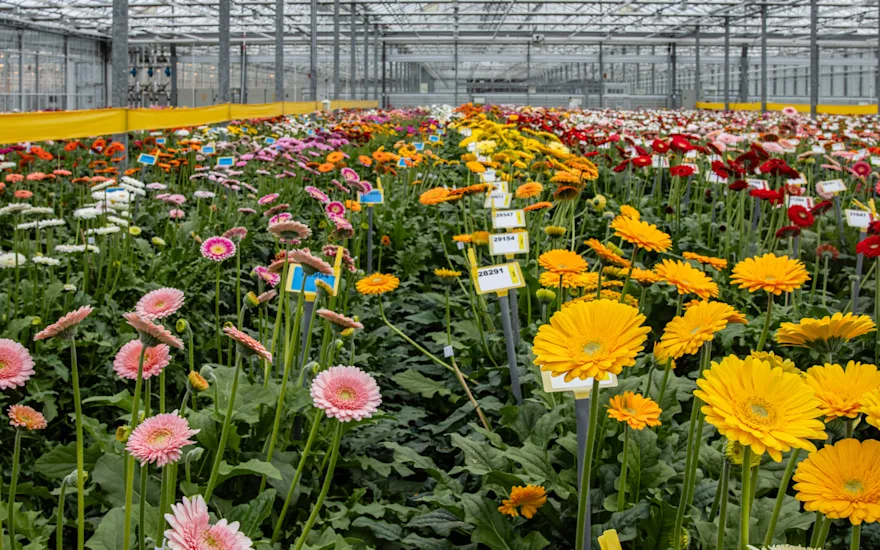
Trends and innovations
How a new species is created is now clear, but on what basis does the breeder actually choose the desired characteristics of the new species? The answer appears to be a combination of factors. "We have goals every year with how many varieties should be a certain color," Robin explains. "We then look at today's trending colors and colors that will come back into fashion later."
"But we also want to be innovative," Robin continues. "So every now and then we go for a new gerbera variety that is really groundbreaking. Think for example of the PowerBall, the Marimo Dark and the Piccolini line. During the breeding process, we also work with growers and florists. They indicate which new varieties they think will catch on. In this way, together we arrive at a selection of the best varieties."
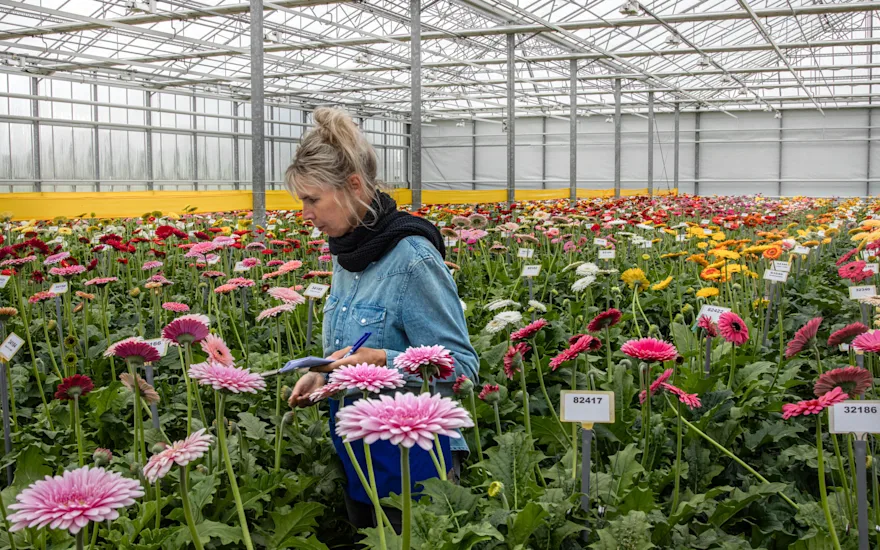
Strict selection
So what happens to the gerberas that don't make it? "Breeding is also throwing away," Robin says. "95% of the flowers don't make it. From the many seeds, often only a few flowers are good enough to take to the next step in the breeding process. Sometimes after crossing two varieties, we choose to further crossbreed the resulting variety until we are truly satisfied. We pay attention to how easy the new variety is to grow, the vase life of the plant and the shelf life of the flower. We also look at the technical characteristics of the plant: what colors does the flower have, how easy is it to pick the stem and what is the diameter of the flower?"
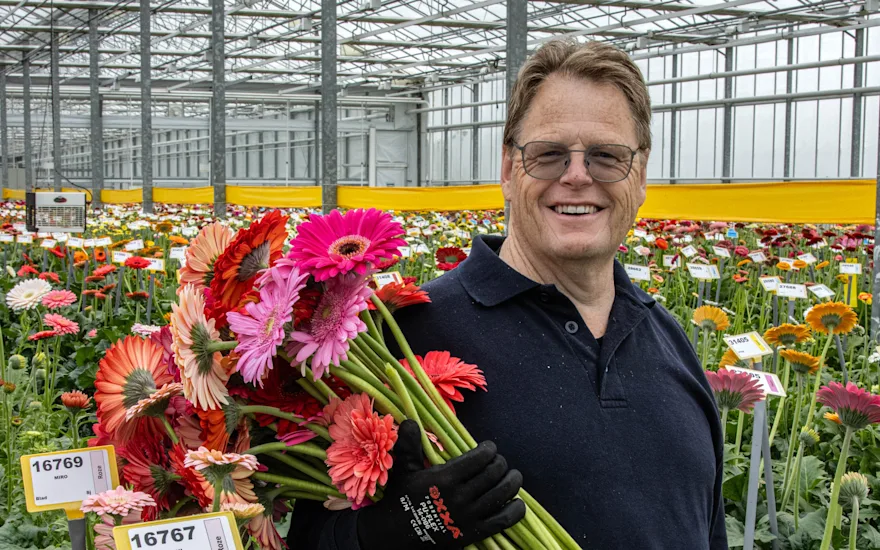
Strategic choice
The entire breeding process takes about 2 to 3 years. When the new gerbera is put on the market depends on whether it already meets HilverdaFlorist's requirements. There is also a focus on the market: is there already demand for a flower with these characteristics when the new gerbera is 'ready'? And is the new gerbera suitable for growing in the country where the demand comes from?
"Sometimes the new variety is totally good, but we wait a bit longer so we don't get in the way of selling another gerbera variety," Robin said. "So you look at more than just the characteristics of the flower. In other cases, a flower is so popular that we speed up the introduction because demand is already very high right away. Again, we take into account the demand of the growers and therefore also the florists."
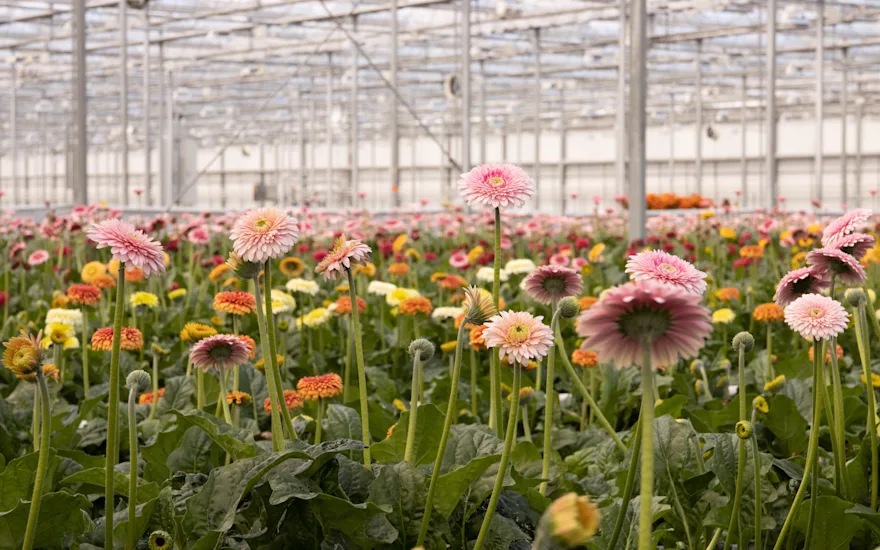
Powerful flower
When Robin is asked which new gerbera variety is his favorite, he has to think for a moment. The product manager of cut gerberas has seen many new varieties come along in his nine years at HilverdaFlorist. In the end, he chooses the PowerBall. "What I like about this gerbera is that the whole picture is right; the pink and white blended petals, the long shelf life and how easily you pick it. What I personally like is that the PowerBall secretly looks a bit like a dahlia, but with a longer shelf life of up to 12 to 16 days. Ideal if you love dahlias and want to enjoy your flowers a little longer."
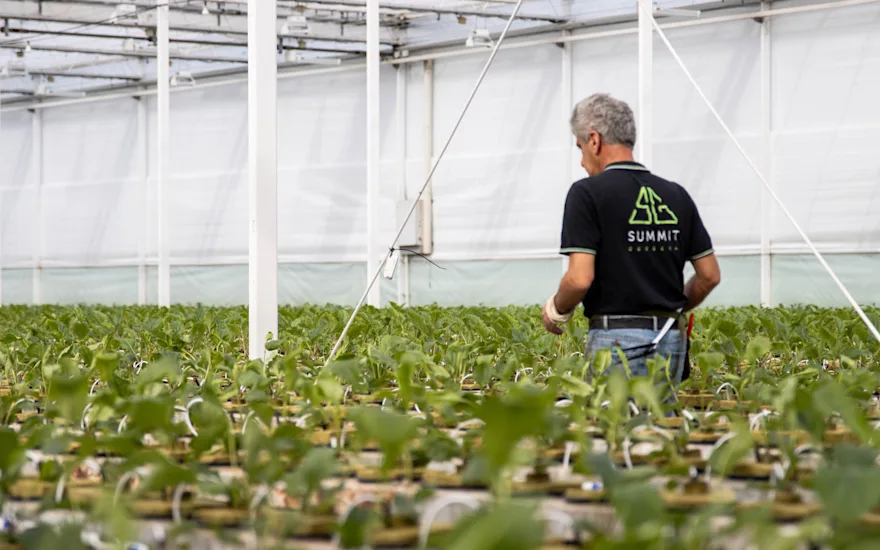
First step
Breeding is an important first step in getting the most beautiful new gerbera varieties into your store. Curious about the next step in the process from seed to radiant flower in your store? Then keep an eye on our website. In Part 2 of Growth, we will discuss the role of the grower. Can't wait to put the latest gerbera varieties in your store? Then visit Van der Plas' webshop now for the most beautiful gerberas from Summit Gerbera.
Check out all of our gerberas!